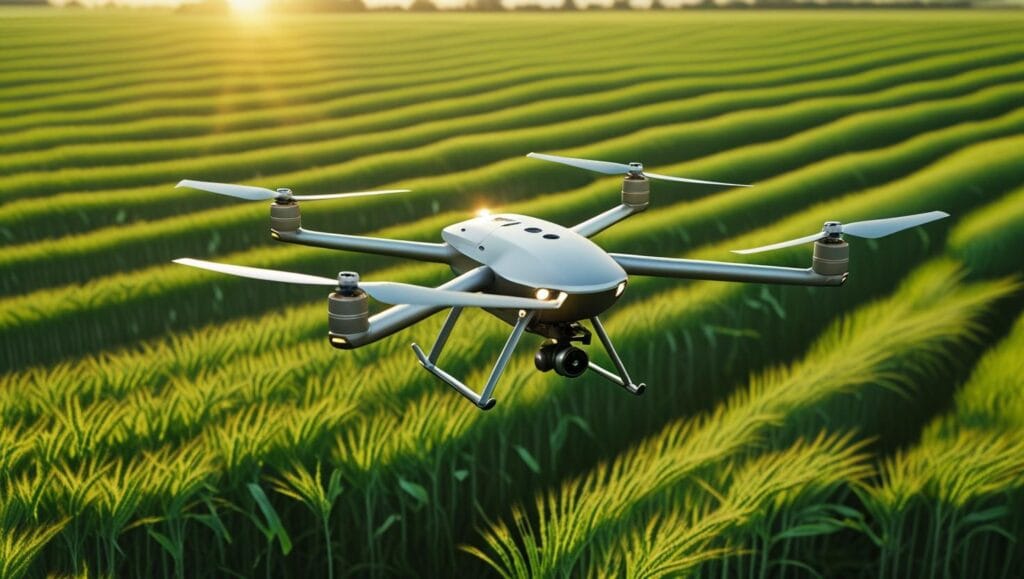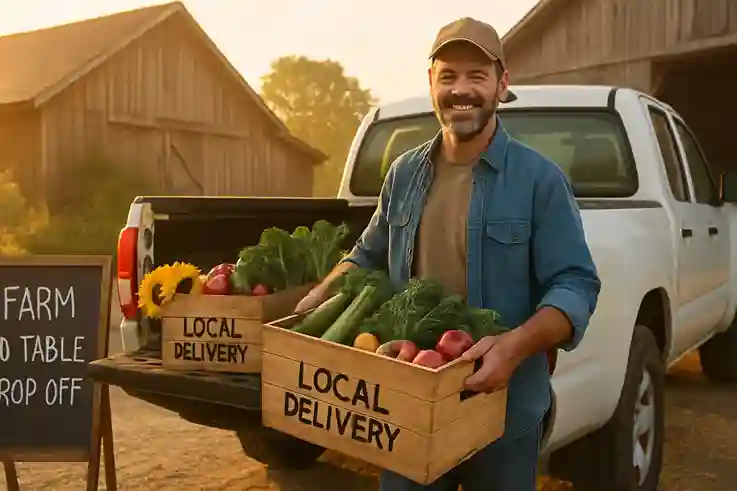Eyes in the Sky: The Rise of Drone Farming in America
✈️ A New Era in American Agriculture
Gone are the days when farming relied solely on hard labor and gut instinct. Today, the hum of drones joins the sounds of tractors and irrigation systems, marking a technological revolution on America’s farmlands. These flying tools—once reserved for military missions or hobbyists—are now empowering farmers to make smarter, faster, and more efficient decisions.
Drone farming, also known as precision agriculture, is no longer a futuristic concept—it’s happening now, reshaping how we grow our food.
🌾 What Is Drone Farming?
Drone farming involves using unmanned aerial vehicles (UAVs) equipped with sensors, cameras, and GPS technology to monitor crops, map fields, and even spray fertilizers or pesticides. These high-tech eyes in the sky give farmers a bird’s-eye view of their land—literally.
💡 How Drones Are Helping Farmers Boost Yields
Here are some of the most impactful ways drones are transforming farms across the U.S.:
1. Crop Monitoring and Health Scans
Drones today do more than just fly—they can actually see what farmers can’t. Many modern drones are equipped with multispectral cameras. These special cameras can detect things that are invisible to the human eye.
For example, they can spot plant stress, such as when crops aren’t getting enough water or nutrients. They can also detect pest infestations or signs of disease—long before any visible damage appears.
This early warning system gives farmers a major advantage. They can take action quickly, treating only the areas that need help. That means less waste, healthier crops, and better yields in the long run.
Early detection leads to faster intervention, which leads to stronger, more productive fields.
2. Field Mapping and Soil Analysis
Drones can quickly fly over large fields and capture detailed images. Using this data, they create 3D maps and analyze soil conditions. These maps help farmers see exactly which parts of their land need extra water, nutrients, or care. This means farmers can focus their efforts where it’s needed most. The result is smarter, more efficient use of resources and healthier crops overall.
3. Precision Spraying
Some drones are designed to carry pesticides or fertilizers. They can spray these chemicals precisely—only on the areas that need them. This targeted approach helps reduce chemical waste. It also saves farmers money by using less product. Plus, it protects the environment by limiting excess chemicals in the soil and water.
4. Planting Seeds
Yes, some advanced drones can do more than just monitor and spray. They can actually plant seeds directly into the soil. This is especially helpful in places that are hard to reach with regular farming machines. By planting seeds from the air, these drones save time and effort. They also help farmers work in rough or uneven terrain where traditional equipment might struggle.
5. Weather and Growth Tracking
Drones can fly the same routes over and over throughout the growing season. By doing this regularly, they capture detailed images and data each time. This helps farmers track how their crops and fields change over weeks and months. The information collected creates a living record of the field’s health. Farmers can use this record to spot trends, make better decisions, and respond quickly to problems as they arise.
🚜 Real-World Impact: From Small Farms to Big Ag
Whether it’s a 50-acre vegetable farm in California or a 5,000-acre cornfield in Iowa, drones are being adopted by farms of all sizes. Farmers are seeing yield increases, cost savings, and better environmental stewardship.
Some key results reported by farmers using drones:
- 20–40% reduction in input costs (like fertilizers and pesticides)
- Up to 15% increase in crop yields
- Hours of field scouting done in minutes
🌍 Why It Matters: Feeding the Future
American farmers are under more pressure than ever before. Climate change is causing unpredictable weather. Water scarcity makes irrigation harder. At the same time, the world needs more food to feed a growing population.
To meet these challenges, farmers must do more with less. This is where drone farming comes in. It offers a solution that is sustainable, scalable, and smart. With drones, farmers get accurate data about their crops and soil. This means they can make decisions based on facts—not just guesswork.
By using drone technology, farmers can protect the environment, save resources, and increase their yields. It’s a powerful tool for farming in today’s changing world.
This technology is helping farms stay profitable while protecting the planet—one aerial scan at a time.
🚀 The Future of Drone Farming
The drone farming market is growing fast. Experts predict it will be worth over $5 billion worldwide by 2030. This growth is happening because drone technology is becoming more affordable for farmers. At the same time, government regulations are evolving to support safe drone use in agriculture.
As a result, more and more farmers will start using drones on their farms. The future of farming is looking smarter and more connected than ever before.
With AI integration, real-time data sharing, and even swarm technology on the horizon, tomorrow’s farmers may rely on entire fleets of flying assistants.
💬 Final Thoughts
Drone farming is more than just a trendy term—it’s a true revolution happening right now. This technology is giving farmers greater control over their land and crops. It provides clear, accurate information that was once impossible to get easily. With drones, farmers feel more confident making decisions. They can act quickly and effectively to protect their harvests.
In short, drone farming is changing the way we grow food—making it smarter, safer, and more successful than ever before.
With eyes in the sky, American agriculture is grounded in something stronger than tradition—it’s powered by precision.

Michael Reyes is a versatile blogger with a primary focus on farming and sustainable living. Growing up close to nature, he developed a deep interest in agriculture and enjoys sharing practical tips on backyard farming, modern cultivation techniques, and eco-friendly practices. While farming remains his specialty, Michael also writes on a wide range of topics, from lifestyle and travel to everyday inspiration, making his work relatable to a broad audience.
Outside of writing, Michael enjoys spending time outdoors, experimenting with new farming methods, and exploring different cultures through food and travel. His approachable voice and well-researched insights make his blogs both informative and engaging.


